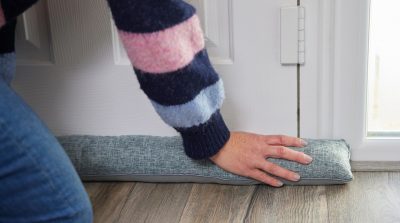Common repairs in tenement buildings can be time consuming and stressful to deal with. Whether you own a tenement flat that is well-maintained and managed or you’re not sure where to start, the process for organising a common repair can be difficult to navigate. Following proper procedures is a critical element in the repairs process and can be essential should you need external help from your local council or if you need to take legal action.
Getting started
First, you need to identify the repair that is required. Often, it’s obvious where the problem is but there can be times where you need professional help to do this. You may need to contact your insurance company to ask for a contractor to carry out a trace and locate. If this isn’t part of your policy, you can arrange for a local contractor to come out and do this.
Next, it’s a good idea to contact the other owners in the building to inform them of the needed repair. If it is a common repair, it is likely that all owners in your building are responsible. It’s worth checking the title deeds for your property to confirm who is likely to be responsible for the repair and to gain an understanding about the rules and responsibilities for your building.
Making decisions
Once confirmed that a common repair is needed, all owners who are responsible must be contacted and informed of the repair before the work starts. Then, an owners’ meeting should be held to ensure a decision can be made on how to proceed. Adequate notice of the owners’ meeting should be given, so that as many owners as possible can attend.
At the owners’ meeting, every owner can vote whether they want to proceed with the repair. A majority vote is needed for a common repair to go ahead. Once a decision to go ahead with the repair has been made, a letter or email should be sent to all owners notifying them of the decision.
Getting quotes
Next, it is necessary to get together a shortlist of potential contractors and get quotes for the repair. You can find contractors through word of mouth, Trusted Trader Schemes, trade associations, the Trustmark register, or commercial online recommendation services. To ensure the contractor is reputable, check to see if they have any reviews or recommendations and make sure they have an office address, use headed notepaper and have a landline phone number.
When accepting a quote from a contractor, formal agreement from all owners is needed. Another owners’ meeting may be required to decide with which quote to proceed. Once decided, a letter or email should be sent to inform all owners of the repair that is being carried out, a timetable of the works, the estimated costs as per the quote and the owner’s share of the repair costs.
Payment
Before the work starts, it is important to gather the money for the repair. It is good practice to have an owners’ association and a joint maintenance account that is paid into regularly by all the owners, so that there is money readily available to pay for repairs. If this is not the case, owners will need to agree on how to pay for the repair and to whom the money should be sent. It is essential to make payment arrangements before signing the contract for the repair to ensure that the money is available when payment is required.
If an owner is struggling to find the money for the repair, they can seek financial advice or ask for help from their local council. The local council may be able to help with paying for the repair.
Managing works
If the common repair is major, such as a roof repair, consider whether you need a professional to help manage the repair, such as a property manager or factor, a surveyor, a quantity surveyor, or a clerk of works. Having a professional on hand can help to ensure the repair goes smoothly and could save you money in the long run.
If you and your co-owners decide to manage the repair yourself, appoint a representative from your building to be the main contact for the contractor. Ensure that the contractor has all the necessary health and safety measures in place and that arrangements have been made for things such as access to the building, toilets and the storing of building materials.
What if something goes wrong?
If any issues arise during the repair process, either yourself or the contractor will be responsible. In the event of a new problem or if there were misunderstandings in the request or an attempt to reduce costs by cutting corners, it would be important for you to address these matters. Similarly, if any problems arise with a sub-contractor of your choosing, it will be necessary for you to handle the situation accordingly.
If the work has defects, instructions for the work have been followed incorrectly, there are negligence-related damages or material problems, or issues arising from a sub-contractor chosen by the contractor, it falls under the contractor’s responsibility. Speak with your contractor as soon as possible if you think something is not right. If they do not sort things out after speaking to you, send them a formal complaint in writing. If this still does not resolve the issue, you can get further advice from a solicitor, the Citizens Advice Bureau, Trading Standard, Building Control, or a Trade Association, depending on the problem. You may also be able to take up the case with Trustmark if the firm is registered with them.
Once completed
Once the repair works are completed to satisfaction, owners can make payment in full to the contractor, or per the terms of the contract if a deposit or staged payments were required. It is a good idea to keep a written record of the repair work carried out, with photographs if feasible, contractor details and any warranties or guarantees.
The repairs process can be complex but following proper procedures can help to ensure it goes smoothly and the works get completed. It’s good practice to have up to date contact details for all owners, a copy of title deeds and adequate insurance in place. For more information on the repairs process and proper procedures for common repairs, see this article.











